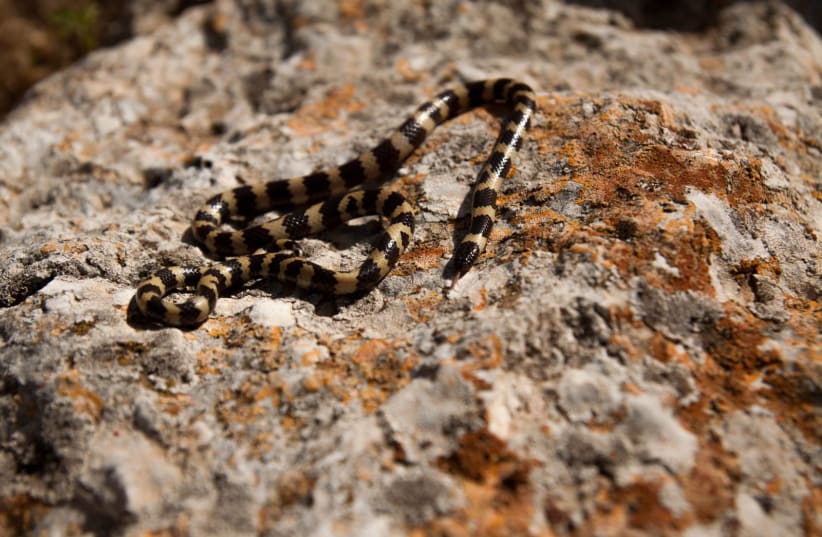Wildlife species are disappearing rapidly around the world, but rarely is a new one discovered. A new snake family named Micrelapidae that includes only three species – two in East Africa and one in Israel – has been identified by an international team, including Israeli zoologists.
The study, conducted by researchers from Finland, the US, Belgium, Madagascar, Hong Kong and Israel, has just been published in the journal Molecular Phylogenetics and Evolution under the title “Ultraconserved elements-based phylogenomic systematics of the snake superfamily Elapoidea, with the description of a new Afro-Asian family.”
Prof. Shai Meiri of the School of Zoology at Tel Aviv University, the Wise Faculty of Life Sciences and the Steinhardt Museum of Natural History Museum took part in an extensive study that identified the new family of snakes. According to the researchers, small snakes –usually with black and yellow rings – diverged from the rest of the evolutionary tree of snakes about 50 million years ago.
What do we know about Micrelapidae, the new snake family?
Micrelaps is a genus of rear-fanged venomous snakes in the family Atractaspididae. The genus is native to Africa and the Middle East. It has a small head that doesn’t look different from the neck, and its body is round with a short tail.
“Today we tend to assume that most large groups of animals, such as families, are already known to science, but sometimes we still encounter surprises, and this is what happened with Micrelapid snakes,” said Meiri. “For years, they were considered members of the largest snake family, the Colubridae, but multiple DNA tests conducted over the last decade contradicted this classification. Since then, snake researchers around the world have tried to discover which family these snakes do belong to – to no avail. In this study we joined the scientific effort.”
The researchers used micro-CT technology – high-resolution magnetic imaging – to examine the snake’s structure, focusing specifically on the skull. They also applied methods of deep genomic sequencing, examining about 4,500 ultra-conserved elements – regions in the genome that take millions of years to exhibit any change. “In addition to the DNA of Micrelaps, we sampled DNA from various snake groups to which they might have belonged. In this way we discovered in Micrelaps some unique genomic elements, which were not found in any of the other groups,” Meiri added.
The researchers said their findings indicate that since Micrelaps diverged from the rest of the evolutionary tree of snakes about 50 million years ago, these snakes have evolved independently as a distinct and separate family.
Apparently, this is a very small family, including only three species: two in Kenya and Tanzania and one in Israel and nearby regions (northern Jordan and the Palestinian Authority, southern Syria, and southern Lebanon). This geographic dispersion suggests that these snakes probably originated in Africa, and then, at some point in their history, some of them made their way north through the Great Rift Valley.
The Environment and Climate Change portal is produced in cooperation with the Goldman Sonnenfeldt School of Sustainability and Climate Change at Ben-Gurion University of the Negev. The Jerusalem Post maintains all editorial decisions related to the content.

